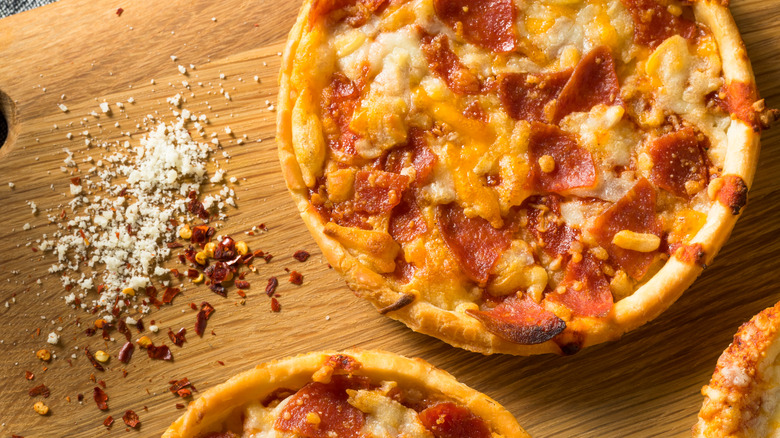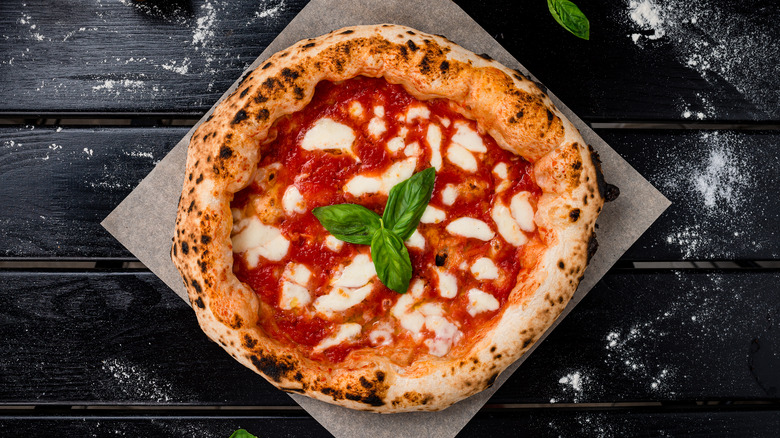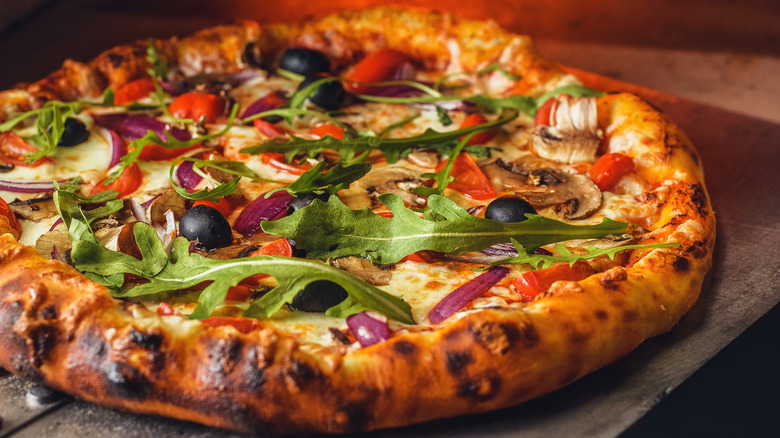What To Know Before Baking Your Frozen Pizza On A Stone
Everyone is familiar with frozen pizza, and it's safe to assume most people have cooked one at least once in their lives. And if you're a bit adventurous in the kitchen, maybe you've made your own homemade pizza at some point, too. However, most people don't have access to a pizza oven and instead must use their basic kitchen oven. That's where a pizza stone comes in.
According to Forno Bravo, a pizza stone is a flat, often ceramic surface that is used to evenly cook a pizza crust through proper heat distribution. It also removes moisture from the dough, which gives pizza its perfectly crisp crust. Essentially, it's a way for a standard oven to imitate a true pizza oven, which ultimately elevates the pizza to its best quality.
Pizza stones aren't generally expensive, but they can make a pizza feel much higher quality than an oven on its own. With that said, there are some limitations on the stone's use, and when it comes to cooking a frozen pizza, you might want to think twice about using your pizza stone.
You shouldn't bake a frozen pizza on a stone
In this case, it's better to be safe than sorry and opt not to cook a frozen pizza on a stone. Since most stones are made of ceramic or something similar, they are susceptible to what is known as thermal shock. In its simplest terms, Science Direct refers to thermal shock as a rapid temperature change that causes strain on a product's material, often resulting in breaking or cracking.
When using a pizza stone, it should ideally be pre-heated along with the oven; this helps it maintain its high temperature. If you place a frozen pizza directly onto a preheated stone, a rapid temperature change can take place due to the pizza being drastically lower in temperature than the stone's surface. According to PureWow, this could lead to thermal shock, breaking or damaging the pizza stone.
Rather than cooking it on a stone, it's best to bake a frozen pizza directly on the oven rack. This lets the heat circulate underneath it, crisping up its crust, and there won't be any thermal shock experience. You can also cook a frozen pizza on a baking sheet, though you might not get the same crunch.
How to properly use a pizza stone
There are a few tips and tricks to ensure you get the most out of your pizza stone. Of course, don't ever place anything frozen onto your stone, and don't transition the stone from the oven to the countertop while it's too hot; this can cause the same thermal shock as the frozen pizza. Plus, Food Network says to place the stone on the lowest oven rack and allow the stone to preheat with the oven. Don't place a cold stone into an already pre-heated oven, or, you guessed it, a thermal shock could happen.
To make sure the stone is at its optimal temperature, Food Network says to give it at least 30 extra minutes to heat up after the oven reaches your desired temperature. From there, use a pizza peel to transfer the uncooked pizza to the stone safely. Cooks Illustrated recommends letting it preheat for a full hour at 500 degrees (the pizza should be cooked at that temperature as well) if you have the extra time.
When it comes to cleaning your stone, Giordano's says you should use very little water and absolutely no soap. Instead, use a stone brush and some warm water to scrub the stone and remove any caked-on stains; let it dry completely before using it again. As a safety measure, make sure the stone has cooled entirely before you attempt to scrub it.


